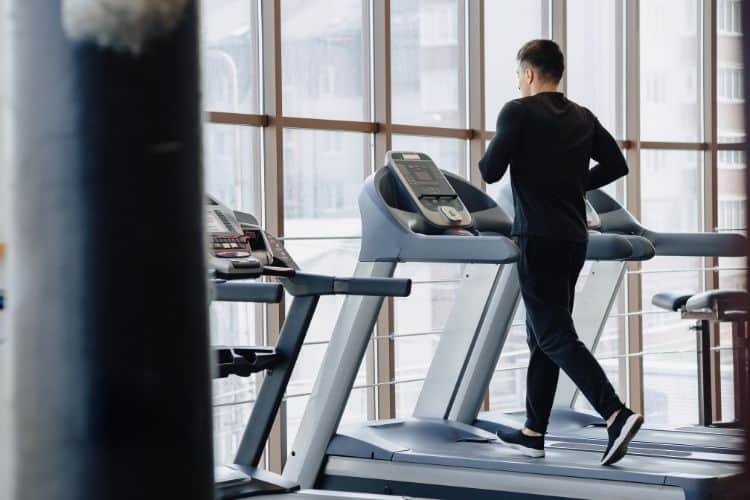
Starting your fitness journey can feel overwhelming, especially when you’re faced with countless workout styles, terms, and techniques. But if you’re looking for a fun, heart-healthy, and beginner-friendly way to get active, aerobic workouts are an excellent place to begin. Whether you’re aiming to lose weight, boost endurance, or simply improve your overall health, this guide to aerobic workouts for beginners will help you understand the benefits, learn key exercises, and build a simple routine that suits your lifestyle.
What Are Aerobic Workouts?
Understanding the Basics
Aerobic exercise refers to any physical activity that increases your heart rate and breathing while engaging large muscle groups for an extended period. Commonly known as cardio, these exercises are rhythmic and continuous, allowing your body to use oxygen efficiently. Unlike anaerobic exercises (like sprinting or weightlifting), aerobic workouts can be sustained over longer durations and are ideal for building cardiovascular endurance.
Common Examples of Aerobic Exercises
Some of the most popular types of aerobic exercises include:
- Walking
- Jogging or light running
- Cycling
- Swimming
- Dancing (Zumba, aerobic dance)
- Jumping rope
- Low-impact home cardio routines
Each of these activities can be adjusted to suit different fitness levels, making them ideal for beginners looking to ease into exercise.
Benefits of Aerobic Workouts for Beginners
Starting with aerobic exercises offers a wide range of physical, mental, and emotional benefits, especially for those who are new to fitness.
1. Boosts Cardiovascular Health
Aerobic workouts strengthen your heart and lungs. As you move, your heart pumps blood more efficiently, delivering oxygen and nutrients throughout your body. This reduces the risk of heart disease, high blood pressure, and stroke.
2. Supports Weight Loss
One of the main reasons beginners turn to aerobic workouts is for fat burning and weight loss. When performed regularly, these exercises help burn calories, especially when combined with a balanced diet.
3. Improves Endurance and Energy
Initially, you may feel tired after a workout, but over time, consistent aerobic activity improves stamina, boosts energy levels, and enhances your ability to perform daily tasks with ease.
4. Enhances Mental Health
Aerobic workouts release endorphins—the body’s natural mood boosters. Studies show that regular aerobic activity can help reduce symptoms of anxiety, depression, and stress, and improve overall mood and cognitive function.
5. Easy to Start and Maintain
You don’t need a gym membership or fancy equipment to get started. Many aerobic exercises for beginners can be done right at home or outdoors with minimal gear.
How to Get Started with Aerobic Workouts
Starting a new workout routine can be intimidating, but these tips will help you ease into aerobic training with confidence.
Step 1: Start Slow and Build Up
If you’re new to fitness, it’s important to begin with low-impact, moderate-intensity exercises, such as brisk walking or beginner-friendly dance workouts. Start with 10–15 minutes per session and gradually increase to 30–45 minutes over a few weeks.
Step 2: Warm Up and Cool Down
Every aerobic workout should begin with a warm-up (5–10 minutes of light cardio and dynamic stretches) and end with a cool-down (gentle movement and static stretches). This helps prevent injury and aids in recovery.
Step 3: Focus on Form
Proper form reduces the risk of injury and maximizes results. Watch video tutorials or work with a trainer if you’re unsure about how to perform certain exercises correctly.
Step 4: Stay Consistent
Aim for at least 150 minutes of moderate aerobic exercise per week, as recommended by the World Health Organization. This breaks down to around 30 minutes a day, five days a week.
Best Aerobic Workouts for Beginners at Home
You don’t need to hit the gym to enjoy the benefits of cardio. Here are some effective and easy at-home aerobic workouts for beginners:
1. Marching in Place
- How to do it: Stand tall, lift your knees high, and swing your arms as if walking.
- Duration: 2–5 minutes
- Benefits: Great warm-up or low-impact cardio move that increases circulation and warms up muscles.
2. Step Touches
- How to do it: Step one foot out to the side, then bring the other foot to meet it. Add arm movements for more intensity.
- Duration: 30–60 seconds per set
- Benefits: Strengthens the hips and legs while elevating heart rate gently.
3. Jumping Jacks (Modified if Needed)
- Standard: Jump both feet out while raising arms overhead, then return.
- Modified: Step side to side instead of jumping.
- Duration: 1–2 minutes
- Benefits: Full-body cardio that improves coordination and agility.
4. High Knees (Low-Impact Option Available)
- Standard: Run in place, bringing knees high with each step.
- Modified: March in place lifting knees as high as comfortable.
- Duration: 30 seconds – 1 minute
- Benefits: Strengthens the core and legs while improving cardio fitness.
5. Low-Impact Aerobic Dance
- Follow a YouTube beginner dance cardio workout.
- Duration: 10–30 minutes
- Benefits: Fun, rhythmic movement that improves coordination, burns calories, and boosts mood.
6. Bodyweight Cardio Circuit
Combine several of the above moves into a circuit:
- March in place – 2 minutes
- Step touches – 1 minute
- Jumping jacks – 1 minute
- High knees – 1 minute
- Rest – 1 minute
- Repeat 2–3 times
Creating a Weekly Aerobic Workout Plan for Beginners
To stay consistent, it helps to follow a structured plan. Here’s a sample beginner aerobic workout schedule:
Week 1–2 Plan
| Day | Workout | Duration |
|---|---|---|
| Monday | Brisk walk + marching in place | 20 mins |
| Tuesday | Beginner dance workout (YouTube) | 15–20 mins |
| Wednesday | Rest or light stretching | – |
| Thursday | Cardio circuit (step touches + jacks + knees) | 20 mins |
| Friday | Brisk walk or low-impact cycling | 25 mins |
| Saturday | Rest or yoga/stretch | – |
| Sunday | Dance cardio or walking workout | 20 mins |
Gradually increase your intensity, reps, or duration each week as your fitness improves.
Safety Tips for Aerobic Workouts
Before jumping into a new workout routine, keep these safety guidelines in mind:
1. Listen to Your Body
Mild soreness is normal when starting out, but sharp pain, dizziness, or shortness of breath are signs to stop and consult a healthcare professional.
2. Stay Hydrated
Drink water before, during, and after your workouts to avoid dehydration.
Wear supportive athletic shoes that cushion your feet and absorb shock to prevent joint stress.
4. Modify When Needed
If you have joint issues or limited mobility, focus on low-impact aerobic exercises and adjust movements to suit your ability.
Frequently Asked Questions About Aerobic Workouts for Beginners
How long should beginners do aerobic exercise?
Start with 15–20 minutes, 3–5 days a week. As your endurance builds, work toward 30–45 minutes per session.
Can I lose belly fat with aerobic workouts?
Yes, aerobic workouts can help burn calories and reduce overall body fat, including belly fat. Combine with strength training and proper nutrition for optimal results.
What’s the best time of day to do aerobic exercise?
Anytime that fits your schedule! Some people prefer morning workouts for energy, while others find evening sessions more convenient. The best time is the time you can stick to consistently.
Is walking considered aerobic exercise?
Absolutely! Brisk walking is one of the easiest and most accessible forms of aerobic activity and is perfect for beginners.
Can I do aerobic workouts every day?
You can, but it’s important to vary intensity and include at least one rest or active recovery day per week to allow your body to recover.
Aerobic Fitness is a Beginner’s Best Friend
Aerobic workouts are an ideal starting point for anyone new to fitness. They’re accessible, versatile, and incredibly effective for improving cardiovascular health, losing weight, and boosting mental well-being. The best part? You can do most of these exercises anytime, anywhere—no gym membership required.
With a little consistency, patience, and motivation, your beginner cardio workouts can evolve into a lifelong fitness habit. So lace up your shoes, turn on your favorite playlist or YouTube instructor, and start moving. Your heart—and your health—will thank you.

